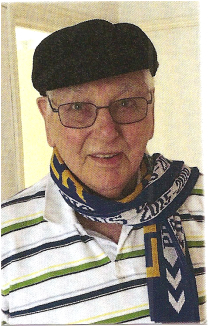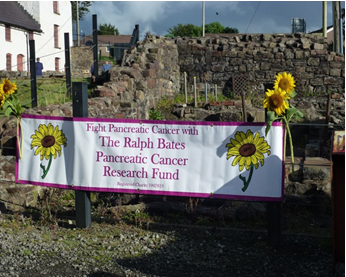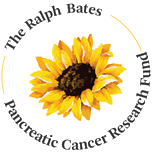Newsletter December 2016
 Another year nearly over! It doesn’t seem that it’s 17 years since the millennium when we had all that doom and gloom about what the year 2000 would do to us, does it? If we believed the doom mongers we wouldn’t bother getting out of bed in the mornings! It’s important to stay positive, isn’t it?
Another year nearly over! It doesn’t seem that it’s 17 years since the millennium when we had all that doom and gloom about what the year 2000 would do to us, does it? If we believed the doom mongers we wouldn’t bother getting out of bed in the mornings! It’s important to stay positive, isn’t it?
Unfortunately, though, we start on a sad note. Pat Baly, one of our founder-Trustees, passed away in October after a short illness aged 94. Pat supported our Fund from its start in January 1992 until he died. He had a tremendous influence on the way the Fund was set up and developed and was instrumental in arranging variety shows at the London Palladium and Shaftsbury Theatres to get the Fund off the ground.
Pat’s family have kindly nominated our Fund to receive donations in his memory and we are extremely grateful for this gesture.
That’s Pat on the right in one of his more “saucy” poses! We will certainly miss him.
Our research has continued;
At St George’s University of London in Tooting, one of our research teams under the direction of Professor Gus Dalgleish, has been continuing research into the effect of various combinations of drugs on cancerous cells. Gemcitabine, the standard drug for pancreatic cancer, has been combined with each of Lenalidomide, a derivative of thalidomide, low dose Naltrexone and Cannabidiol, a derivative of cannabis. Research has concentrated on whether or not these drug combinations enhance the effect of the other drug or drugs in the combination. Enhanced cancerous cell death has been seen when gemcitabine is combined with Cannabidiol, which may be related to a change from suppressing cell growth to actually killing those cells. The research team consider this development as “great progress”. This is good work but there is still a long way to go.
The team researching the effect of protein control on cancerous cells, led by Dr. Androulla Elia, has also had a successful year. Their previous research has shown that a certain “good” protein (4E-BP1 for the technical readers!) is often present in very low amounts in pancreatic cancer cells. Tests using a combination of gemcitabine and a cytokine (a substance secreted by certain cells in the immune system which has an effect on other cells), have shown that;
- The growth of pancreatic cells can be inhibited
- Cancerous cells can be induced to die.
- The level of the protein 4E-BP1 in cancerous cells can be increased, which is favourable.
The team has been collaborating with a group at the Cancer Research Centre in Toulouse, France, where the protein can be induced, enabling the effect on pancreatic cancer cells to be closely monitored. As the team says- “we have some very exciting preliminary data” which will be worked on going forward.
Part of our research started some 25 years ago and as you can see from the above, some results are finally starting to filter through. It’s a long haul and the dedication of the research teams is commendable. It’s good to see collaboration between teams as it’s not a race to find a cure for pancreatic cancer, but an aim. Let’s hope 2017 is productive!
So what have our supporters been doing?
Some of our supporters get younger! It was gratifying to receive a donation from a young man in Bedford (we’ll call him “George”), who is just 10 years old. George took part in a sponsored Xbox marathon one Friday evening in November and managed 9 hours solid before falling asleep at 4am! He donated his sponsorship money to our Fund.
This is a commendable achievement for one so young. I don’t do 4ams these days but George probably got over his marathon with no side effects. Thanks a million George, for your hard work and support.
And in Blaenavon in South Wales- the home of the Big Pit Coal Museum (well worth a visit!) – Jane Heath has been spreading the word about our Fund. She has already arranged a couple of local functions and next year we intend to do a lot more, with Jane’s help, to raise funds there. One of Jane’s closest friends died from pancreatic cancer and having experienced at close hand the debilitating effects of the illness, she is keen to help wherever she can.
 Jane managed to display this banner among some ancient brickwork in the town. The sunflower was Ralph Bates’ favourite flower and we will be using it a lot more on our communications in future.
Jane managed to display this banner among some ancient brickwork in the town. The sunflower was Ralph Bates’ favourite flower and we will be using it a lot more on our communications in future.
Thanks Jane- your support is very much appreciated by our Fund.
These days the value of products bought online is staggering. If you’re an online shopper, you may wish to support our Fund every time you purchase from anyone of over 4000 online retailers, including Amazon, ebay, John Lewis, Boots, Sainsburys and Marks and Spencer. Just sign up to “Give as you Live” and if you link into their website before purchasing from your selected online retailer, part of the commission they receive is paid to our charity. It doesn’t cost you or us anything and so far, they’ve raised over £7.5 million for charities.
It does no harm to keep reiterating some of the symptoms of pancreatic cancer. The more the word is spread the better, as potential victims will hopefully be prompted to take advice if they think they may have a problem. Every case is different and it’s wrong to try to generalise but be wary of;
- Yellow skin or eyes and / or itchy skin.
- Unexplained weight loss.
- Tummy pain, especially at the top of the abdomen, which may radiate to the back.
- Bowel changes such as oily, floating faeces.
Does lifestyle play a part?
About a third of pancreatic cancers are linked to lifestyle. The two main risk factors are obesity and smoking followed by high consumption of alcohol and red and processed meats.
And remember too that pancreatic cancer does not discriminate between sexes and is not age related. The important thing is an early diagnosis.
We hope you have a relaxing festive season and a healthy and prosperous New Year.
Best wishes from all of us.
The Trustees. December 2016.

